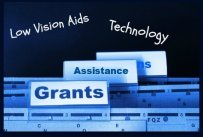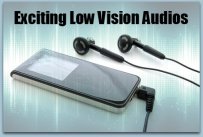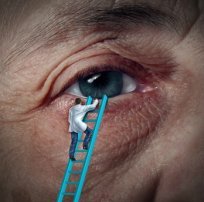Students and Learning
new methods of learning for students and teachers

Despite advancements in technology and individual achievements, many people have low expectations those with vision loss, from independence to learning capabilities. Overcoming that obstacle is tough enough for students, but another major hurdle is the way blind children are educated starting from a very young age. If students with limited sight are taught only one method, it is still hard to navigate and succeed in today’s world. For example, some individuals with vision loss cannot read Braille or use computers. Unfortunately, relying only on large print text can limit their reading speed, mobility, and learning opportunities. Other students may learn Braille but be unable to use computers or other advanced technologies that would make a huge difference in everyday life.
low vision students and learning
New Methods for Teaching
Dr. Denise Robinson is an educator for the blind in central Washington. She lost most of her sight at age 24 due to hemorrhaging associated with diabetic retinopathy, but quickly realized the potential in learning Braille and other technologies. She studied in a resource classroom with a mentor who gave blind students the skills they needed to succeed in everything from performing everyday tasks to navigating the area independently.
Following her education, Dr. Robinson began teaching low vision students by using Braille and technology to adapt their mainstream classroom worksheets with the help of para-educators. This fully integrated approach to learning enables visually impaired or blind students to function independently in the classroom, including reading, taking notes, completing written tasks, and printing out assignments.
learning with vision loss
When Large Print Isn’t Enough
Students who rely on large print text often fall behind their sighted peers, as they are unable to read quickly or complete written assignments. Para-educators often act as shadows to record a student’s dictated text, but this leaves the students unable to communicate non-verbally on their own. Dr. Robinson defends and champions the use of Braille, and she also encourages the use of computer-based speech programs. Individuals new to the software may have a slow start, but they get gain speed rapidly and often surpass sighted students.
Additional classroom tools include embossed diagrams and charts. Para-educators fill the gap between mainstream assignments and blind students by reproducing the required materials using Braille, e-text, enlargements, or raised lines and diagrams. There are also several tools that can be used for students who cannot see at a distance, including stationary and portable monitors attached to document cameras. If a class involves taking notes from a screen or the board, the teacher can send Word documents to low vision students who access the information via BrailleNotes.
Finally, Dr. Robinson ensures that the students under her care learn to write with a pen and paper as well as a slate and stylus. She wants individuals to be able to sign their name and leave notes for sighted people as needed.
The Importance of Training Para-Educators
Individuals of any age who suffer from vision loss may have trouble coping, and they may want to hide or minimize their condition. Unfortunately, much of this dependence may come from working with para-educators or other individuals who regularly complete tasks for them. Dr. Robinson quickly realized that she needed to train the para-educators she hired to teach the visually impaired rather than do the work for them.
Today, Dr. Robinson hosts weekly para training sessions and handles the programming, paperwork, scheduling, and advanced technologies required for teaching the blind. She also regularly gives presentations and meets with school directors to encourage the implementation of new programs and equipment. Her efforts are not going unnoticed, so hopefully her educational tools and methodology can spread across the states to give all students the chance to learn and succeed.

















